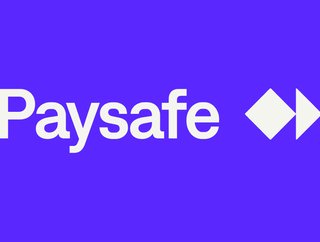Paysafe Talks Payments in VR, AR and Autonomous Vehicles

Payments innovations touch all areas of industry today, as businesses look to onboard the latest in technological advancements to offer their consumers a seamless, convenient experience.
And, as new technology-led consumer experiences hit the market, how payments will look in relation to the technology in question will inevitably be an issue that is frequently raised.
Here, Paysafe Chief Operating Officer Roy Aston, talks about laying the groundwork for payments in the virtual reality (VR), augmented reality (AR) and autonomous vehicles spaces.
Paysafe: Payments in the future of tech
For Aston, it’s first worth remembering that with payments technology, “it’s easy to put the cart before the horse.”
He adds: “A brilliant concept that excites consumers will have businesses rush out to embrace it, regardless of whether the world is ready.
“It wasn’t so long ago that 3D televisions were a must-have household item. Within a couple of years, dust gathered on those thick-rimmed spectacles and the new dawn of television remained decidedly two-dimensional.”
So, while caution must be taken when it comes to scaling new tech, Aston feels evolving innovations like augmented reality (AR), and autonomous vehicles – unlike 3D televisions – are here to stay.

“The hype is real,” he says. “These will have a real impact on various industries, and the lives of consumers. And payments are playing a crucial role in their success.
“Take AR, for example. Way back in 2014, clothing chain Topshop used VR and AR in a retail environment to allow customers to ‘see’ items before parting with cash. Since then, Amazon, IKEA and other retail giants have followed suit.
“And embedded wallets are already available in connected cars, boosting the user experience. In theory, they allow drivers to pay for fuel, tolls and more without having to leave their increasingly sophisticated vehicles.”
However, for Aston, this is where the horse card conundrum begins. Because for these trends to realise their full potential, the right infrastructure needs to be in place. “It isn’t quite there yet,” he says.
Putting the right infrastructure in place
So, what are some of the infrastructural issues that need addressing?
“Connected cars may come equipped with an embedded wallet, but many local petrol or charging stations are not capable of working with the car’s digital wallet to facilitate payment at the pump,” explains Aston.
“Similarly, payments in AR and VR have been around for many years now, and it seems we have the technology to drive mass adoption. Buying goods in a virtual environment, during say, Black Friday, would hold enormous appeal for those who may want to steer clear of crowds.
“But hardware remains expensive, and adoption of payments in AR or VR is low. According to recent research, only 3% of surveyed consumers have used AR or VR to purchase goods.”
So, how can these issues be addressed, and how easily can infrastructural change in payments can be made in these industries?
For Aston, “Working with trusted payment providers to ensure the infrastructure is in place is essential, as is embracing payment innovation.
“Petrol stations and retailers are already responding to changing consumer needs, whether that’s offering different, local payment methods like digital wallets or eCash, or through cashier-less point-of-sale (POS) terminals that help mitigate staff shortages.
“With payments in AR and VR, consumer appetite is growing. When asked if consumers see themselves using AR to purchase goods in the next two years, 28% see themselves doing so as it becomes more widely available, and they learn more about it.”
What’s more, as with the growing popularity of any new technology, the adoption of payments services may increase as the service itself becomes more popular.
Aston expands: “Adoption will also grow as AR in video gaming booms. As consumers seek new, exciting experiences, developers and publishers will embrace this technology, and allow consumers to make micro-transactions without the annoyance of removing the headset.
“For all industries, continuing to embrace innovation in payments, and working with trusted providers to allow them to do so, will help drive better customer experiences and lay the roots for these amazing technologies to bloom.”
Earlier this year, Paysafe spoke to us about ways it sees the crypto market evolving as we head further into 2024.
**************
Make sure you check out the latest edition of FinTech Magazine and also sign up to our global conference series – FinTech LIVE 2024.
**************
FinTech Magazine is a BizClik brand.
- Walmart Majority-Owned Fintech, One, Launches BNPL ServiceDigital Payments
- ComplyAdvantage Acquires Golden for AI Crime InsightsFinancial Services (FinServ)
- Eric Hussey, Finastra joins FinTech LIVE New YorkTech & AI
- GoCardless & Intuit Launch US, AUS Apps to Support SMEsFinancial Services (FinServ)







